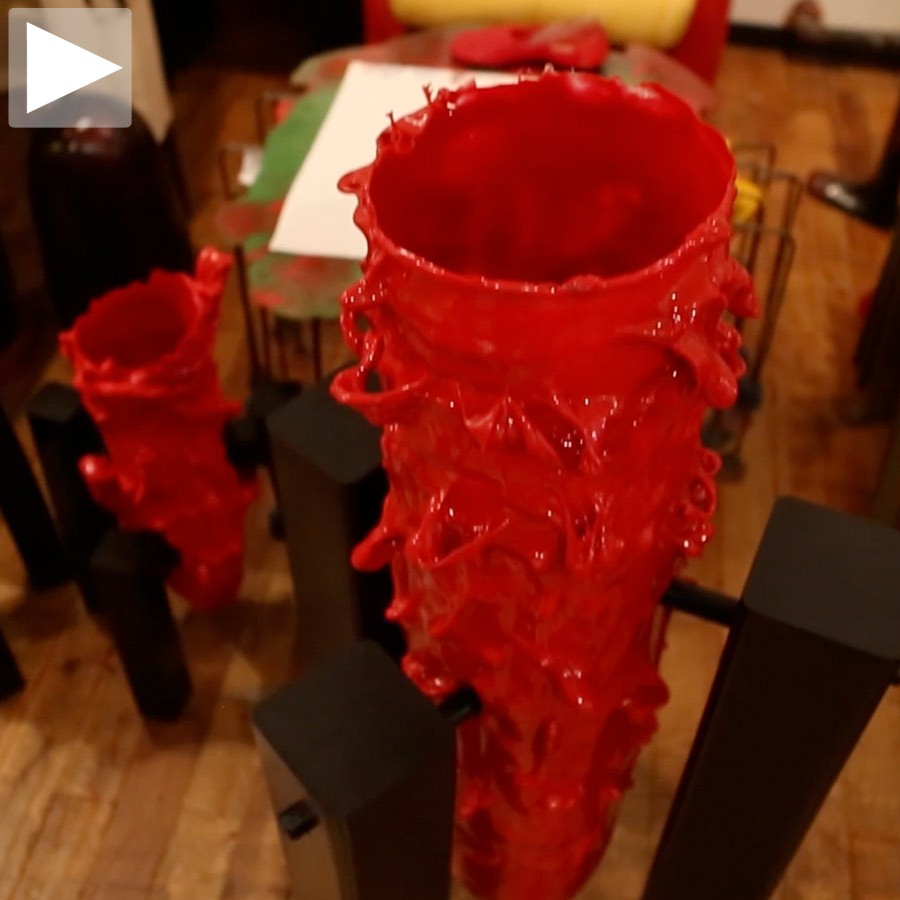Best of CH 2013: Cool Hunting Video
From pinball machines to vintage planetarium projectors, we take a look back at some of this year’s best videos

As people around the world prepare for the holidays and the new year, what better time then to look back on all of the standout Cool Hunting content from 2013. CH Video traveled from California to Georgia, met some memorable characters and got to go behind the scenes in some remarkable locations, from the largest lunchbox collection in the world to the factory of New York’s most charming and curse-prone stationer. Below is a list of six outstanding pieces from 2013—and get ready, because next year is going to be a doozy.
In a large warehouse in Los Angeles, behind a massive rolling metal door, there is a room full of awesome pinball machines. A labor of love, Pins and Needles is a public arcade filled with privately owned pinball machines made available for everyone to enjoy by Molly Atkinson. Selected by its energetic and tremendously charming founder, each machine has a unique and enchanting personality. We spent the day with Atkinson, learning about the history of pinball machines, her obsession with the sport and how she came to be quite the pinball mechanic. Most days of the week Pins and Needles opens its door from 8PM-midnight, during which time you will find Atkinson and many other enthusiasts hammering away for the high score—just don’t forget your quarters.
Recently, CH spoke to architect and designer David Adjaye, a rising star whose award-winning firm is working on the National Museum of African American History and Culture for the Smithsonian in Washington, DC. A thoughtful and charming individual, Adjaye has a very clear vision of his relationship with structures and design. But this was challenged when he was given the opportunity to take a break from buildings and design a collection for the furniture brand Knoll. We spoke with Adjaye about this new experience, the difference in designing furniture and the purpose of a chair.
There are many beautiful things to see on the drive into Big Bear Lake, CA but one of the more interesting and lesser known is the Planetarium Projector Museum. In an unassuming building a stone’s throw from the lake, owner Owen Phairis has managed to compile the largest collection of planetarium projectors in the world. Phairis, who also does an electrical stage show as Nikola Tesla called “Man Of Lighting,” has a very unique obsession with the retired machines. These fantastic optical relics have been rescued from defunct planetariums and schools, now taking residence under a re-purposed military parachute in Phairis’ space. We spoke to Phairis about the projectors and were even lucky enough to get a private viewing of the stars.
For our final video that premiered at this year’s 99u, we spent the day in midtown Manhattan with Terrapin Stationers. Operating for nearly a century, this printing house has kept up with the times by adding a contemporary element to their business with some catchy—and possibly offensive—stationery. Still using traditional techniques, with a focus on hand-crafted quality, Terrapin offers beautiful engraved stationery with some very unique messaging.
While recently rambling through the rolling hills of Georgia, CH ended up on the outskirts of Columbus at the world’s largest Lunchbox Museum, situated in the back of the Rivermarket Antique Mall. Owner Allen Woodall is an avid collector of many things—from classic cars to southern pottery—but his lunchboxes are at the top of his list. We spent the day with Woodall browsing his epic collection, which spans generations, styles and materials.
During our recent visit to Seattle, WA we stopped by an unusual farmers market, where instead of tomatoes and tangerines, customers can purchase medical cannabis. The NW Cannabis Market, open seven days a week at two locations, hosts a variety of vendors who sell their products wholesale to anyone with a recommendation for medical marijuana in the state of Washington. The market fosters a conversation between farmers and patients about the process, ingredients and effect of the product—giving the patient more control over their medication, while offering insight into consumer demands for the growers. Though not completely unique (there are other similar markets in Washington) the model has enormous potential for the medical marijuana community.












